Protrusion Limits [§307.2]
People with vision impairments often travel closely along walls which can provide wayfinding cues sometime called a “shoreline.” Objects mounted on walls, partitions, columns, and other elements along circulation paths can pose hazards unless their projection is limited. Those with leading edges that are within cane sweep (27” high maximum) or that provide minimum headroom clearance (80” minimum) do not pose hazards and can protrude any amount.
Limits of Protruding Objects
Protruding object limits apply to the full width of circulation paths.
Location Above Detectable Elements
Objects located above elements that are within can sweep can protrude 4” maximum from the leading edge of such elements provided that any required reach or clear floor space is not obstructed.
Side Partitions and Wing Walls
Side partitions or panels and wing walls can also be used to make protruding objects compliant. The bottom edge of panels or partitions must be 27” high maximum.
Recessed Objects
Objects can be recessed in alcoves so that they do not project more than 4” into circulation paths. Alcoves must be sized to accommodate required clear floor space at accessible elements.
Elements, such as wheelchair accessible drinking fountains, must provide a knee clearance of at least 27”. If located to provide, but not exceed this clearance (27” above the floor or ground absolute), they are not protruding objects because the leading edge will be within cane detection.
A wheelchair accessible unit located 27” absolute above the ground or floor is cane detectable and can be used to enclose one side of high units for standing access. In this instance, the 27” height is effectively an absolute dimension because it is the minimum required for knee clearance and the maximum specified for cane detection.

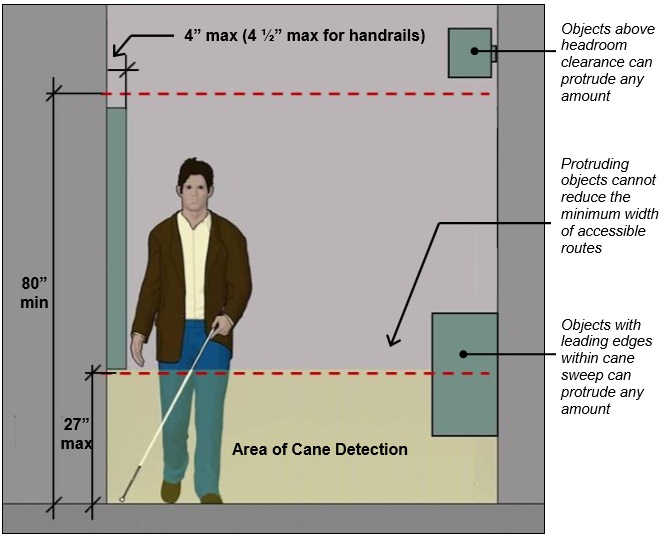
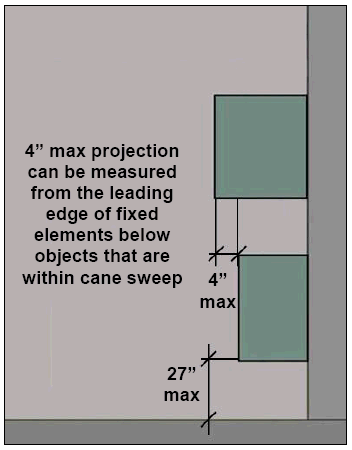
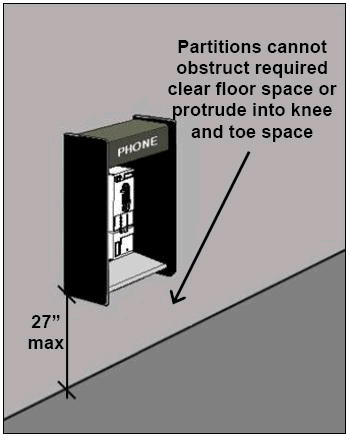
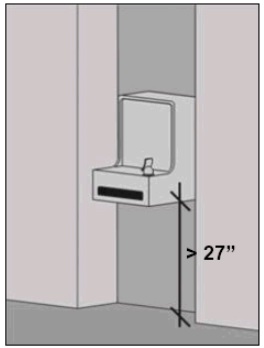
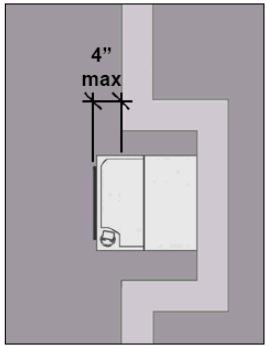
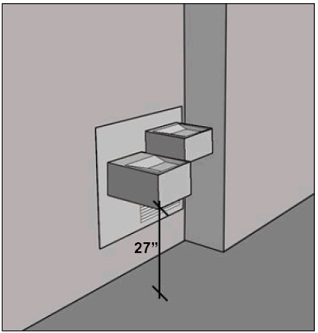
User Comments/Questions
Add Comment/Question